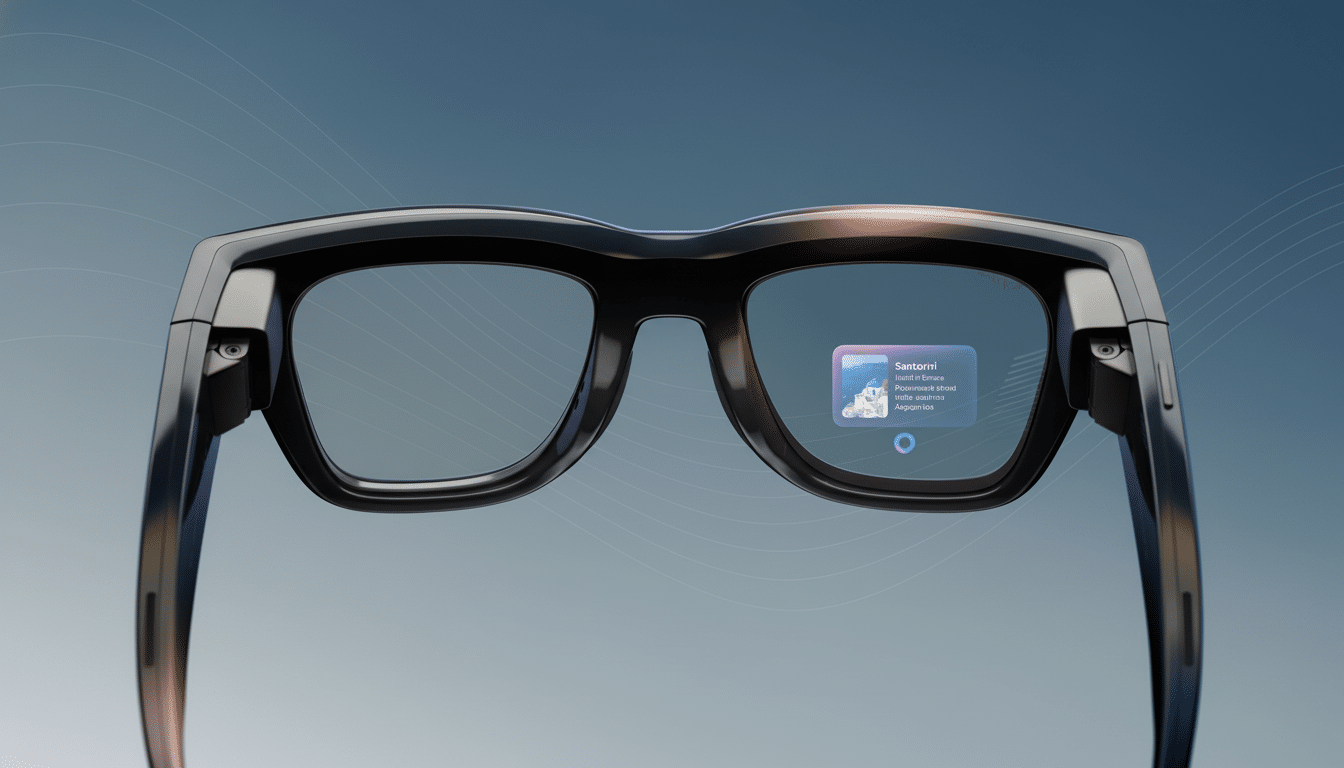But a new teardown lays bare an old tradeoff: incredible engineering that’s bound up with the product, in this case AR glasses that don’t seem long for the mortal world.
Hardware experts at iFixit dissected the $800 frames and found cutting-edge hardware stuffed inside a svelte frame, along with glue, solder, and design decisions that effectively dash maintenance against the rocks.

An Uncommon Waveguide With No Distractions
There’s a micro-projector inside the right temple that shoots light into a geometric waveguide in the lens and uses this to project a 600×600‑pixel image that appears to float in front of your eyes.
This approach, iFixit notes, directly addresses two key issues that have plagued AR eyewear for years: the “eye glow” effect visible to onlookers and distracting rainbow artifacts visible under overhead lighting. By more precisely modulating the light that is shaped and aimed, the display tries to produce a cleaner, more private image that also merges into reality.
It is itself an impressive act of miniaturization. The compute stack — a Qualcomm Snapdragon AR1 platform together with 2GB of RAM and 32GB of storage — is shoved into the arms, not adding enough bulk outright to make the frames feel helmeted. And that balance matters in something you wear: a lighter, slimmer profile encourages daily use, and monocular projection keeps power consumption in check for a product that you’re wearing all day.
Battery Service Is More Notion Than Action
iFixit found a 960mWh cell, the most explicit wear part in any wearable. In practice, a motivated owner could swap it out. In reality, getting to that battery requires a touch of specialized knowledge, some patience, and a little luck in keeping from severing the delicate ribbon cable tucked beneath layers of adhesive. Making matters worse, there are no official replacement parts to buy, meaning that even if you manage a successful DIY repair, it all comes down to finding the right compatible cell.
Wearables stand or fall with their battery life. All lithium cells lose capacity over hundreds of charge cycles, and that decline may hit daily-use products faster than some owners expect. With no sanctioned spares or a modular design, a battery weakening too much threatens to take premium glasses and render them drawer tech, however well the rest of the hardware has held up.
Glue All Over and Not Many User-Replaceable Parts
The teardown indeed shows repairability wasn’t a consideration for the design of the device. Speakers are soldered, the lenses are bonded to a delicate waveguide assembly, and even the hinges require finesse to open up. iFixit called the glue application “overkill,” which seems particularly true since the glasses have an IPX4 rating — protection from splashes, not submersion. In other words, the sealing seems more an end run around serviceability than anything else.

These options reflect broader wearables trends. Most earbuds and smartwatches come pretty much sealed, sacrificing long life for miniaturization and water resistance. But as a category that is meant to live on your face all day long, the inability of the user to replace parts they wear every single day is a long-game risk — for both consumers and the brand’s story around sustainability.
Context From Right to Repair Efforts and Laws
Policy momentum is going the other direction. The European Union has pushed for Right to Repair legislation based on easier access to spares and accompanying documents. France already rates products on a repairability scale, and U.S. states such as California, Minnesota, and New York passed laws that broaden the availability of parts and manuals for consumer devices. Though glasses are a tougher engineering challenge than a phone, regulators and customers increasingly expect premium electronics to be fixable in life beyond the warranty window.
Independent repair advocates say that even the simplest concessions — such as standard fasteners, adhesive pull tabs, and official battery kits — can have significant effects on a product’s lifespan. For smart glasses, such steps might extend the life of a perfectly sound headset whose battery has faded or a speaker that died during heavy use.
What Buyers Should Consider Before Purchasing
First adopters of these glasses should see the purchase as a gamble on cutting-edge optics today, with few roads to long life tomorrow. If the battery runs down or a part breaks out of warranty, it will probably be either an expensive factory swap — assuming one is offered at all — or a challenging, unsupported DIY effort. Prospective owners should consider total cost of ownership, not just the sticker price.
That caution doesn’t dilute the technical accomplishment. The cleaner visuals of the waveguide, the lightweight compute platform, and just good general comfort contribute to a real step forward for AR that’s trying to appeal to any market beyond teens in spacesuits. But the industry’s next achievement will be to marry those advances with designs that are maintainable — whether through authorized service or user-replaceable modules — without inflating size or weight.
The Bottom Line on Meta’s Repairability Tradeoffs
The Meta Ray-Ban Display is an advertisement for what lightweight AR can achieve: sharper, subtler graphics and realistic all-day wear. iFixit’s teardown also clarifies that this first wave remains a closed box, with adhesives and soldered components preventing some longevity. For AR to progress from novelty into a lasting platform, the next generation of devices must guard the future as vigilantly as they project themselves in the present.

